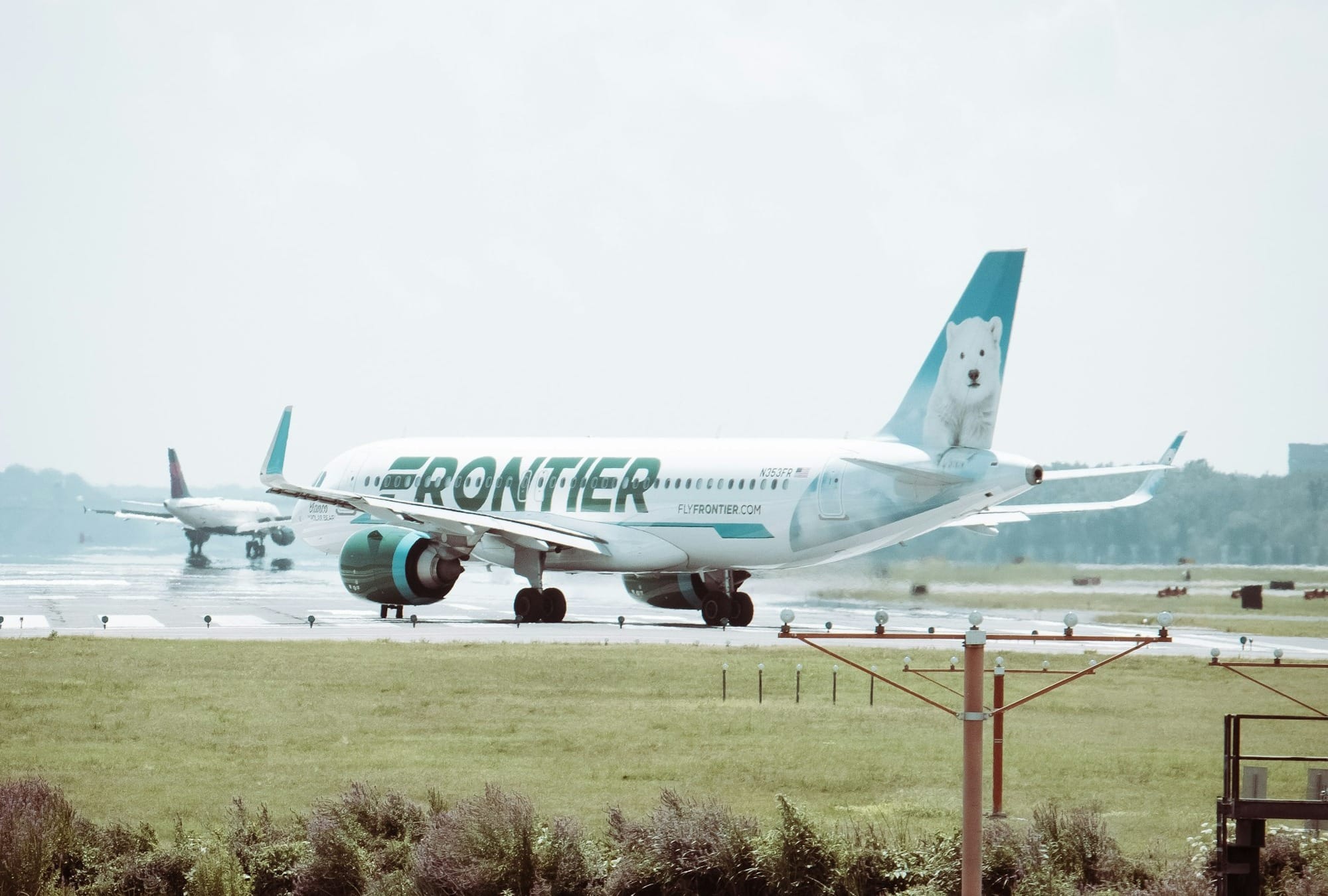LATAM Airlines Group Announces Major Expansion with New Routes to Europe and Asia
LATAM Airlines Group, Latin America's largest airline, has unveiled an ambitious expansion plan that includes new routes to Europe and Asia. This strategic move aims to strengthen LATAM's global network...

LATAM Airlines Group Announces Major Expansion with New Routes to Europe and Asia
Key Takeaways:
- LATAM Airlines Group is expanding its routes to Europe and Asia.
- The expansion aims to enhance connectivity, strengthen LATAM's global network, and capitalize on growing travel demand.
- New routes will cater to both leisure and business travelers, as well as cargo needs.
LATAM Airlines Group, Latin America's largest airline, has unveiled an ambitious expansion plan that includes new routes to Europe and Asia. This strategic move aims to strengthen LATAM's global network, enhance connectivity for passengers, and solidify its position as a leading international carrier. The expansion comes as the airline industry continues to recover from the impacts of the COVID-19 pandemic, with LATAM positioning itself to capitalize on growing travel demand.
New European Destinations
LATAM's expansion into Europe includes several new routes and increased frequencies to existing destinations. While specific details are limited, potential new European destinations based on market trends and LATAM's current network include:
- Madrid, Spain: Increased frequencies from various South American hubs, capitalizing on strong cultural and economic ties between Spain and Latin America.
- Paris, France: New direct routes or additional frequencies, tapping into the lucrative tourism market and business travel demand.
- Rome, Italy: Potential new destination, offering direct connections between Latin America and one of Europe's most popular tourist destinations.
- Amsterdam, Netherlands: Possible new route, leveraging Amsterdam's status as a major European hub for onward connections.
- Lisbon, Portugal: Increased services to cater to growing demand and historical connections between Portugal and Brazil.
These new and expanded routes will not only serve leisure travelers but also cater to business passengers and cargo needs, enhancing trade and economic ties between Latin America and Europe.
Asian Market Expansion
LATAM's move into the Asian market represents a significant step in its global strategy. While the airline currently has limited presence in Asia, this expansion could include:
- Tokyo, Japan: Potential new direct routes from major South American cities, tapping into the growing business and tourism market between Latin America and Japan.
- Shanghai or Beijing, China: New services to capitalize on increasing trade and tourism between China and Latin American countries.
- Seoul, South Korea: Possible new destination, recognizing the growing economic ties and cultural exchanges between South Korea and Latin America.
- Singapore: Potential hub for connecting Latin America to Southeast Asia, leveraging Singapore's strategic location and world-class airport facilities.
These Asian routes would significantly enhance LATAM's global reach and provide Latin American travelers with more direct options to key Asian destinations.
Fleet Expansion and Modernization
To support this major expansion, LATAM is likely to invest in fleet modernization and expansion. While specific details are not provided, we can infer that the airline may:
- Acquire new long-haul aircraft such as the Boeing 787 Dreamliner or Airbus A350 to operate these new intercontinental routes efficiently.
- Retrofit existing aircraft to enhance passenger comfort and align with international standards for long-haul travel.
- Optimize its fleet mix to ensure the right aircraft are deployed on the new routes, balancing capacity with demand.
Enhancing Connectivity and Hub Strategy
LATAM's expansion plan is expected to strengthen its hub strategy, with key airports in South America serving as connection points for passengers traveling between Europe, Asia, and various Latin American destinations. This enhanced connectivity could include:
- Improved scheduling to minimize connection times at major hubs like São Paulo, Santiago, and Lima.
- Increased frequencies on regional routes to feed the new long-haul services.
- Investment in airport infrastructure and lounges to enhance the passenger experience during connections.
Partnerships and Alliances
To maximize the impact of its expansion, LATAM may seek to strengthen existing partnerships or forge new alliances. This could involve:
- Deepening cooperation with oneworld alliance partners to provide seamless connections beyond LATAM's new European and Asian gateways.
- Exploring codeshare agreements with Asian carriers to extend its reach within the region.
- Collaborating with European airlines to offer comprehensive coverage of secondary cities.
Economic Impact and Market Positioning
LATAM's expansion is expected to have significant economic implications:
- Job Creation: The new routes will likely create numerous jobs, both directly within LATAM and indirectly in related industries such as tourism and hospitality.
- Tourism Boost: Improved connectivity is expected to stimulate tourism flows between Latin America, Europe, and Asia, contributing to economic growth in these regions.
- Trade Facilitation: Enhanced cargo capacity on these new routes will support international trade, potentially opening new markets for Latin American exports.
- Competitive Positioning: This expansion will strengthen LATAM's position against other global carriers, potentially attracting more premium and business travelers.
Challenges and Considerations
While the expansion presents significant opportunities, LATAM will need to navigate several challenges:
- Regulatory Approvals: Securing necessary permits and slot allocations at congested European and Asian airports.
- Competition: Facing established carriers on these new routes, particularly in the highly competitive European market.
- Operational Complexity: Managing an expanded network across multiple time zones and regulatory environments.
- Economic Volatility: Mitigating risks associated with currency fluctuations and economic uncertainties in various markets.
Sustainability Initiatives
In line with global aviation trends, LATAM's expansion is likely to be accompanied by a strong focus on sustainability. This could include:
- Investment in fuel-efficient aircraft to reduce carbon emissions on long-haul routes.
- Exploration of sustainable aviation fuels (SAF) for use on the new intercontinental services.
- Implementation of waste reduction and recycling programs across its expanded network.
- Participation in carbon offset programs to mitigate the environmental impact of increased operations.
Customer Experience Enhancements
To compete effectively on these new long-haul routes, LATAM may introduce several customer experience enhancements:
- Upgraded in-flight entertainment systems and connectivity options.
- Improved catering with a focus on international cuisine options.
- Enhanced loyalty program benefits to attract and retain frequent flyers on these new routes.
- Introduction of premium economy class on long-haul flights to cater to a broader range of travelers.
Conclusion
LATAM Airlines Group's announcement of major expansion with new routes to Europe and Asia marks a significant milestone in the airline's history and represents a bold step in its global strategy. This expansion not only enhances LATAM's competitive position in the international aviation market but also promises to bring significant economic benefits to Latin America through increased connectivity, tourism, and trade opportunities.
As LATAM embarks on this ambitious journey, its success will depend on careful execution of its expansion plans, effective management of operational challenges, and the ability to deliver a compelling value proposition to passengers in highly competitive markets. The airline's expansion also comes at a critical time for the aviation industry, as it recovers from the impacts of the COVID-19 pandemic and adapts to changing travel patterns and consumer expectations.
By connecting Latin America more closely with Europe and Asia, LATAM is not just expanding its route network; it's building bridges between continents and cultures. This expansion has the potential to reshape travel patterns, stimulate economic growth, and offer new opportunities for businesses and individuals across the regions it serves.
As LATAM moves forward with its expansion plans, the aviation industry and travelers alike will be watching closely to see how this ambitious strategy unfolds and what it means for the future of international air travel in Latin America and beyond.
Q&A Section
Q: What are the new European destinations LATAM is considering? A: Potential new European destinations include Madrid, Paris, Rome, Amsterdam, and Lisbon.
Q: Which Asian cities might LATAM expand to? A: LATAM's potential new Asian destinations include Tokyo, Shanghai or Beijing, Seoul, and Singapore.
Q: How will LATAM support its expansion in terms of fleet? A: LATAM is likely to invest in new long-haul aircraft such as the Boeing 787 Dreamliner or Airbus A350, retrofit existing aircraft, and optimize its fleet mix.
Q: What economic impacts are expected from LATAM's expansion? A: The expansion is expected to create jobs, boost tourism, facilitate trade, and strengthen LATAM's competitive positioning.
Q: What sustainability initiatives might LATAM implement? A: LATAM may invest in fuel-efficient aircraft, explore sustainable aviation fuels, implement waste reduction and recycling programs, and participate in carbon offset programs.
Q: How will LATAM enhance the customer experience on new long-haul routes? A: LATAM may upgrade in-flight entertainment systems, improve catering options, enhance loyalty program benefits, and introduce premium economy class on long-haul flights.









